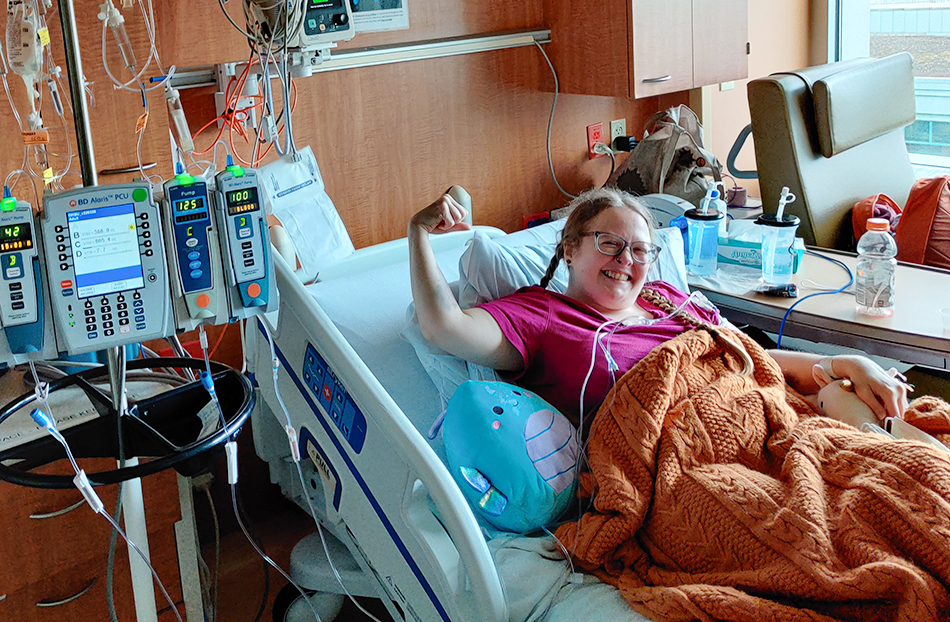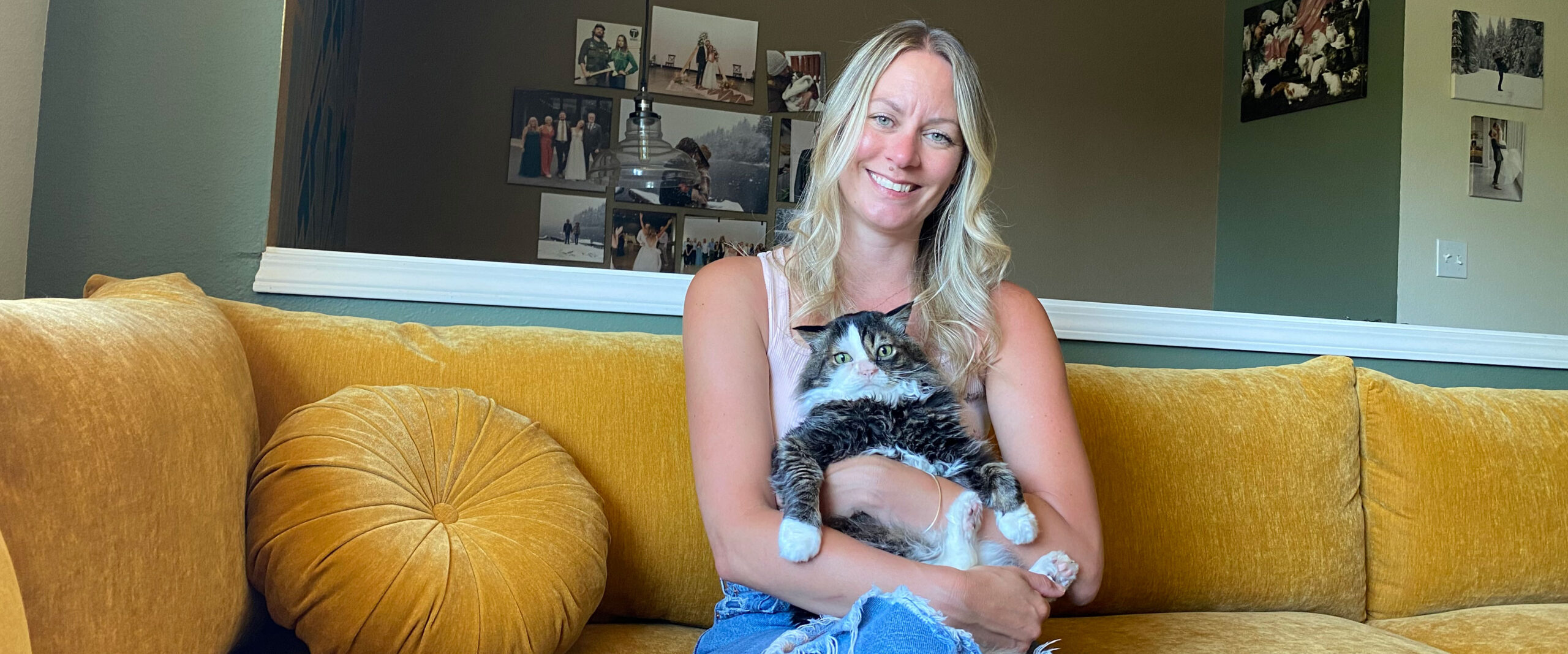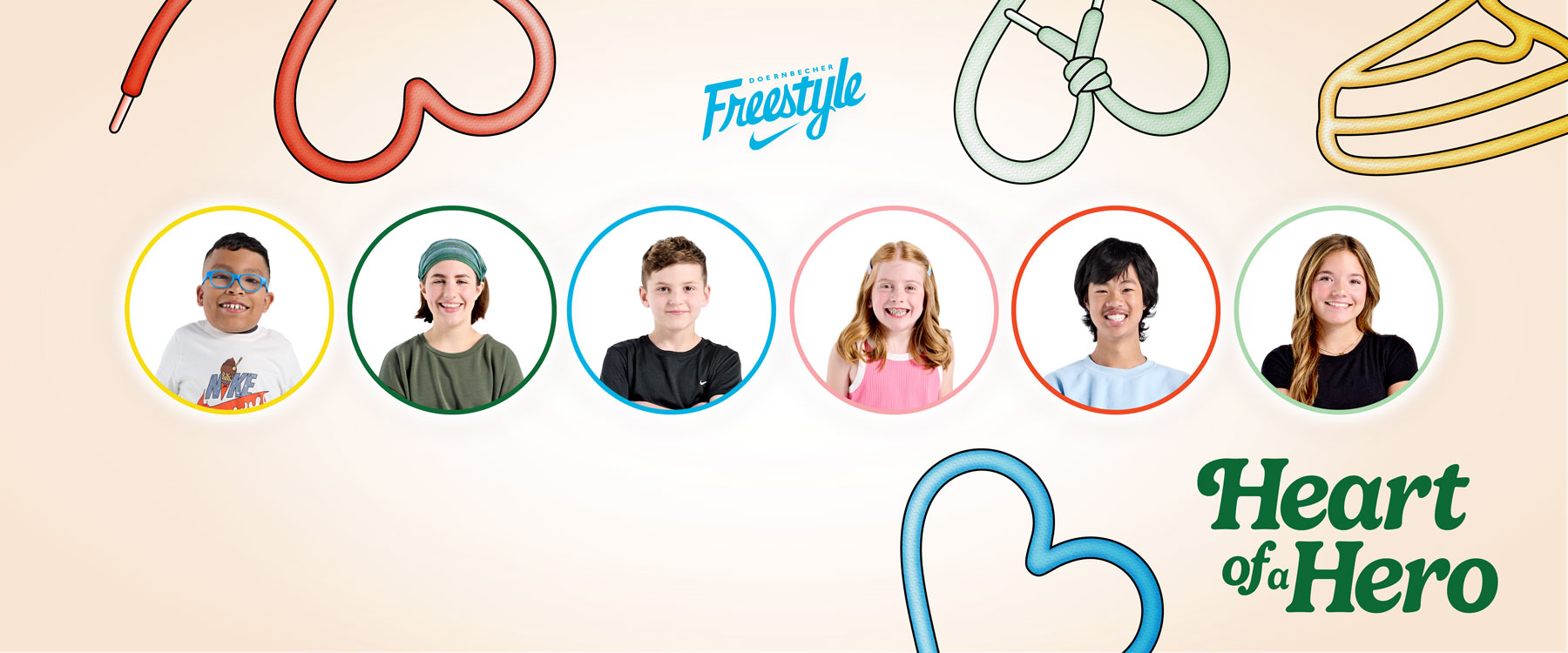Content warning: In support of trauma-informed communications, please be aware that this story contains topics that may be activating for those who have been impacted by pregnancy loss.
When Bre Gravley, 26, and her fiancé, Bill Osburn, of Forest Grove, Oregon, discovered she was pregnant, they were thrilled.
“Bill and I were over the moon. We had always wanted kids,” said Bre.
But there was something else going on — the day before, Bre had visited the doctor about some strange symptoms — a swooshing sound in her ear and vision problems. Tests revealed she had a cancerous mass growing on her thyroid.
That weekend, Bre started bleeding. She and Bill were devastated at their pregnancy loss. As miscarriage is extremely common in first-time pregnancies, their doctors reassured them that there wasn’t anything to be too concerned about for future pregnancies at this stage.
Later at her pre-thyroidectomy appointment, her hormone levels revealed she was still pregnant. Her doctors advised her that the procedure, which would remove the tumor, might put the pregnancy at risk for miscarriage. Bre and Bill had a choice to make.
“There was no guarantee of miscarriage,” Bill said of the decision, “but more importantly, we wanted to get the cancer out.”
They went forward with the thyroidectomy, and her pregnancy was not affected. She has been cancer-free since June 1, 2022.
As the pregnancy progressed, Bre and Bill became concerned about it. An ultrasound showed the fetus developing abnormally and growing less than anticipated. The genetic testing results were normal, the doctors unsure of the cause.
Two weeks later, Bre started to experience other troubling symptoms. She had a persistent headache, severe chest pain and was having a hard time breathing, but she assumed it was a chest cold. One particularly miserable day, Bill took Bre to the emergency department at OHSU. They met with Caitlin Bump, M.D., M.S., FACOG, an assistant professor in obstetrics and gynecology at the OHSU School of Medicine, who immediately diagnosed her with advanced preeclampsia. Bump said Bre arrived just in time — she was within days of dying.
“I was days away from dying. There was no grey area. A lot of people don’t understand that ‘abortion’ is a general term for medical use.”
Bre Gravley
Preeclampsia is a serious complication of pregnancy that can be fatal for both mother and baby. It most commonly develops after 20 weeks of pregnancy but can occur earlier — as it did for Bre. The cause of preeclampsia is unknown, and the treatment is the delivery of the baby and placenta.
At the same time, the doctors could see that the blood flow to the baby was seriously compromised, which was likely caused by the preeclampsia and the reason for the abnormal growth they had seen in the ultrasound.
The pregnancy was no longer viable. Given how acutely ill Bre was, she would not survive the remaining weeks needed for their baby to grow to a size he could be saved. Bre and Bill faced another choice: whether or not to terminate the pregnancy they so desperately wanted. They worked together to reach a decision.
“In my mind, the options were: bring Bre home or don’t [terminate the pregnancy] and don’t bring Bre home,” said Bill. “Either way, the baby wasn’t coming home with us. But there was no way I was coming home without Bre.”
After hearing their options, they decided to pursue a dilation and evacuation, or D&E. A D&E is a procedure often lumped with others under the label “abortion.” It involves dilating the cervix and removing the pregnancy. Abortion is a highly-debated topic. For Bre, it saved her life and gave her and Bill a chance to try for a family in the future.
“I was days away from dying. There was no grey area,” Bre said. “A lot of people don’t understand that ‘abortion’ is a general term for medical use.”
Bre and Bill said that, despite the circumstances, their experience on Marquam Hill was excellent.
“The team at OHSU were amazing during the whole situation,” Bill said. “Extremely empathetic, very professional. When we got the bad news, they did everything they could to show us all the options.”
To this day, Bre says her OHSU team continues to send her messages to see how she’s doing, and she’s grateful for their support.
“I think more people should understand that even if it’s a medical necessity, it’s a difficult choice,” Bill said. “A lot of women who have no other option have to break their own hearts to do what is physically required to continue living. It’s not black and white; it’s every color of the rainbow and probably some colors the human eye can’t see.”
***

Cat and Theia Schonder had just moved to Portland from South Carolina when they found out Cat was pregnant. Like Bre and Bill, Cat and Theia were delighted by the news.
“We never thought we would be able to conceive after many years of trying. We were so happy,” said Cat.
The couple immediately told their friends and family and started planning for parenthood. But things took a negative turn about 10 weeks into Cat’s pregnancy.
“One night, I felt a lot of bone pain throughout my body. I had never experienced anything like that before but assumed it was pregnancy pain. I couldn’t sleep all night,” said Cat. “We finally decided to call OHSU’s nurse advice line, and they said I needed to go to the hospital right away. I went in and they figured out that I had leukemia.”
There was more bad news: OHSU doctors told the couple that the treatment for Cat’s leukemia would be less effective during pregnancy, as well as hurt the pregnancy. In order for Cat to receive the chemotherapy and bone marrow transplant she needed to fight the leukemia, she would have to end the pregnancy.
“It’s our job to make safe spaces for the people we serve. Abortion care is no exception.”
Abigail L. Liberty, M.D.
It was an anguishing decision, and they were grateful for the thoughtful support they received from Abigail L. Liberty, M.D., a Complex Family Planning fellow in the Department of Obstetrics and Gynecology.
“It was hard, but the care was fantastic. Dr. Liberty was the most compassionate person. She really helped out. I’m really thankful that she was the one who performed the abortion,” said Cat.
“When Cat was being diagnosed and I was sitting there holding her hand, I remember having a surreal moment and realizing we’re probably going to lose the baby. I thought, how fortunate that we’re here [in Oregon] and able to receive care,” said Theia.
Had Cat and Theia still lived in South Carolina, they would have come up against South Carolina’s severe restrictions on abortion, which may have postponed or prevented her from starting treatment. Being in Oregon, Liberty could proceed with the procedure without delay so Cat could begin fighting the leukemia.
“Cat’s cancer treatment was not compatible with pregnancy,” said Liberty. “Because she was at OHSU, her oncology team was able to discuss all treatment options with Cat and her wife, including what it meant to continue or end the pregnancy and how that would impact her diagnosis and her treatment success.”
Because Cat had the choice to terminate her pregnancy, she was able to quickly undergo chemotherapy and a bone marrow transplant in OHSU’s oncology department.
Cat left behind ripples of change among the OHSU staff. She was open with her story during her hospitalization at a time when abortion was all over the headlines in polarizing ways. By sharing her vulnerable experience with honesty, she inspired the members of her care team to be more passionate about providing this essential service.
“After meeting Cat and hearing her tell her story, [the staff] approached the care with a newfound compassion and motivation,” said Liberty. “I have the opportunity to work alongside some of the people she spoke to, and they continue to participate in abortion care in no small part because Cat made the life-saving nature of the care so real to them.”
Cat, Theia, Bre and Bill all expressed gratitude for the sensitive care they received, and for OHSU’s commitment to providing the full continuum of reproductive health care — including abortion — to all who seek it.
“Every time we embrace the human experience, especially things that can be uncomfortable — like mortality, disability, grief or fertility — we become better care providers,” said Liberty. “It’s hard to name these things and say them out loud, but it’s our job to make safe spaces for the people we serve. Abortion care is no exception.”
Update: As this story was preparing for publication, we learned the heartbreaking news that Cat Schonder passed away on December 27, 2022, from complications due to leukemia. Her wife, Theia, conveyed that sharing Cat’s story honors her life and values.
“[Abortion care] is something she felt very passionately about, and I am immensely proud of her for opening up and sharing,” Theia wrote. “We both took comfort in knowing that her struggle could help others.”




